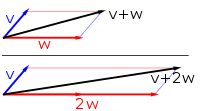
Photo from wikipedia
An agent faces a decision under uncertainty with the following structure. There is a set $${\mathcal {A}}$$ A of “acts”; each will yield an unknown real-valued payoff. Linear combinations of… Click to show full abstract
An agent faces a decision under uncertainty with the following structure. There is a set $${\mathcal {A}}$$ A of “acts”; each will yield an unknown real-valued payoff. Linear combinations of acts are feasible; thus, $${\mathcal {A}}$$ A is a vector space. But there is no pre-specified set of states of nature. Instead, there is a Boolean algebra $${\mathfrak {I}}$$ I describing information the agent could acquire. For each element of $${\mathfrak {I}}$$ I , she has a conditional preference order on $${\mathcal {A}}$$ A . I show that if these conditional preferences satisfy certain axioms, then there is a unique compact Hausdorff space $${\mathcal {S}}$$ S such that elements of $${\mathcal {A}}$$ A correspond to continuous real-valued functions on $${\mathcal {S}}$$ S , elements of $${\mathfrak {I}}$$ I correspond to regular closed subsets of $${\mathcal {S}}$$ S , and the conditional preferences have a subjective expected utility (SEU) representation given by a Borel probability measure on $${\mathcal {S}}$$ S and a continuous utility function. I consider two settings; in one, $${\mathcal {A}}$$ A has a partial order making it a Riesz space or Banach lattice, and $${\mathfrak {I}}$$ I is the Boolean algebra of bands in $${\mathcal {A}}$$ A . In the other, $${\mathcal {A}}$$ A has a multiplication operator making it a commutative Banach algebra, and $${\mathfrak {I}}$$ I is the Boolean algebra of regular ideals in $${\mathcal {A}}$$ A . Finally, given two such vector spaces $${\mathcal {A}}_1$$ A 1 and $${\mathcal {A}}_2$$ A 2 with SEU representations on topological spaces $${\mathcal {S}}_1$$ S 1 and $${\mathcal {S}}_2$$ S 2 , I show that a preference-preserving homomorphism $${\mathcal {A}}_2{{\longrightarrow }}{\mathcal {A}}_1$$ A 2 ⟶ A 1 corresponds to a probability-preserving continuous function $${\mathcal {S}}_1{{\longrightarrow }}{\mathcal {S}}_2$$ S 1 ⟶ S 2 . I interpret this as a model of changing awareness.
Journal Title: Economic Theory
Year Published: 2019
Link to full text (if available)
Share on Social Media: Sign Up to like & get
recommendations!